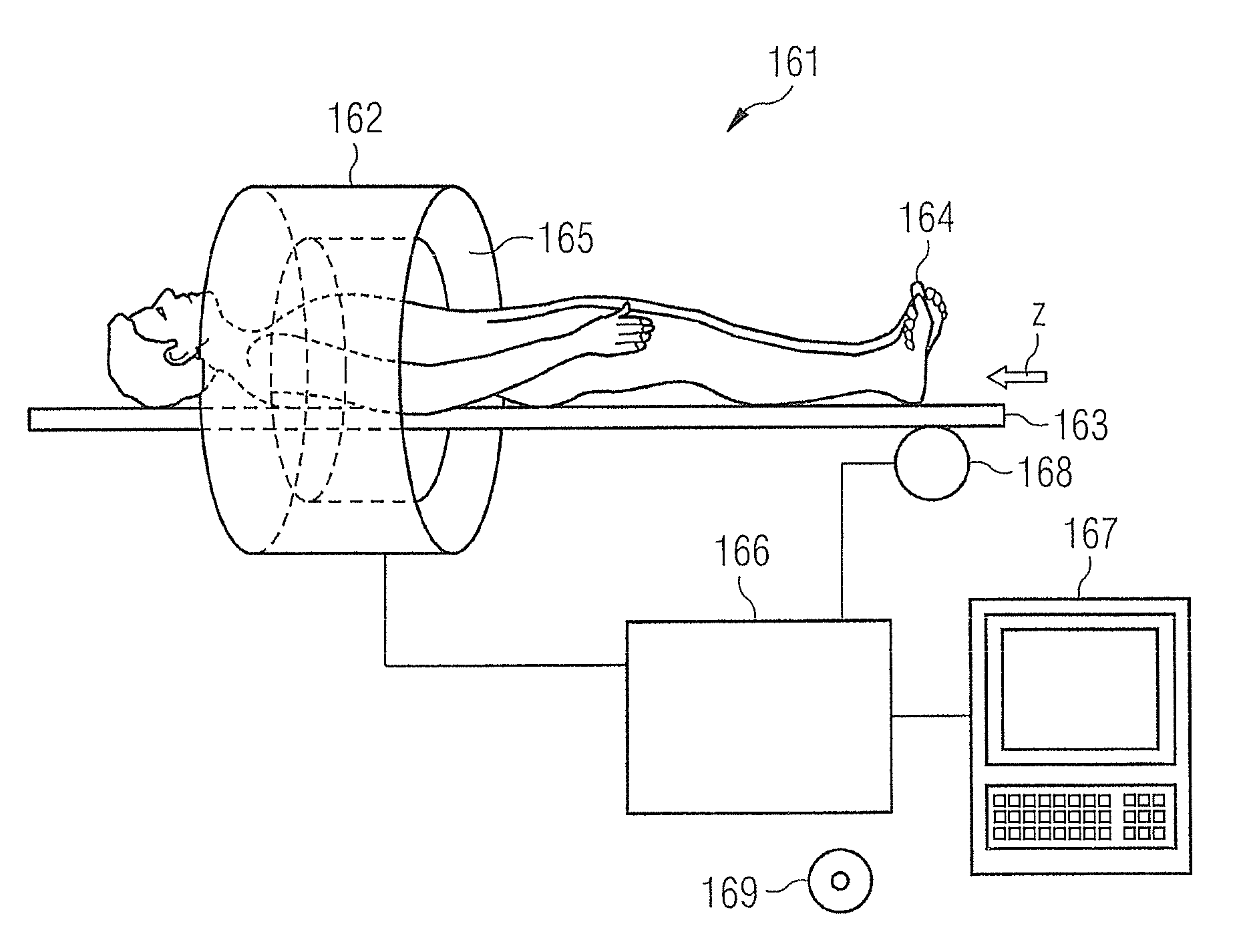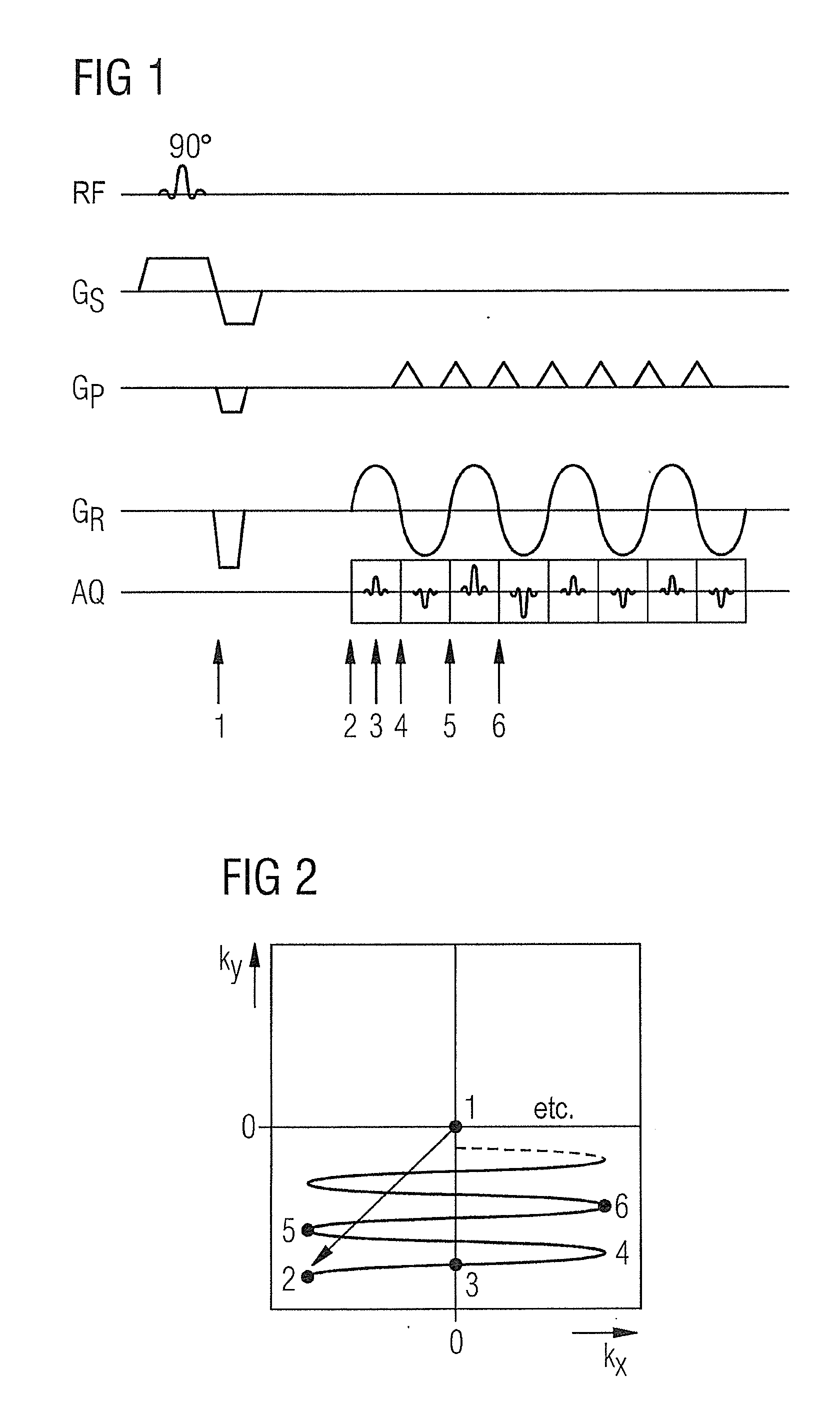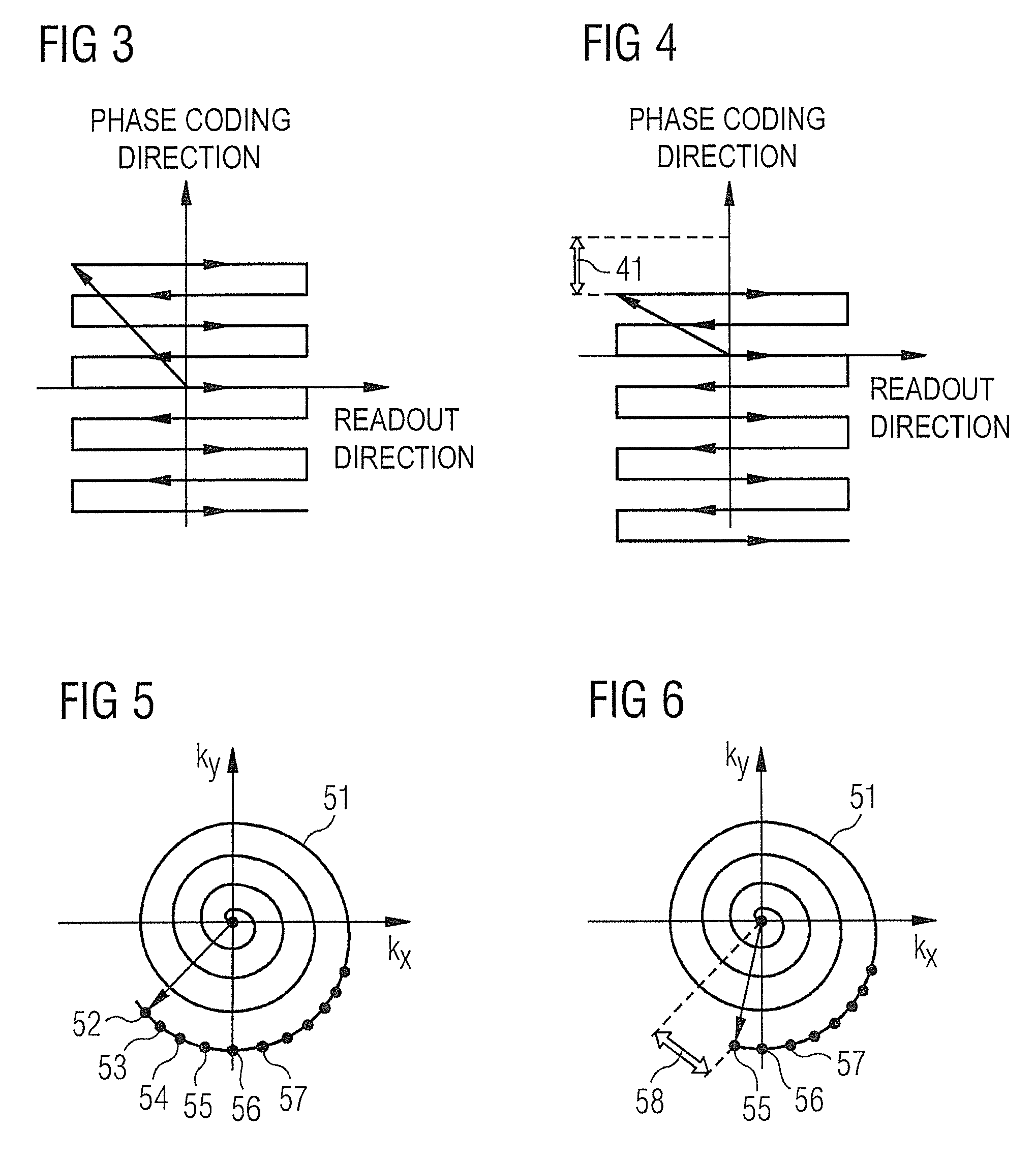Method and magnetic resonance system for distortion correction in magnetic resonance imaging
a magnetic resonance imaging and distortion correction technology, applied can solve the problems of high sensitivity to bsub>0 /sub>field distortion or induced susceptibilities, and achieve the effect of improving the distortion correction in the field of magnetic resonance imaging
- Summary
- Abstract
- Description
- Claims
- Application Information
AI Technical Summary
Benefits of technology
Problems solved by technology
Method used
Image
Examples
Embodiment Construction
[0043]FIG. 5 shows a trajectory 51 in an X / Y plane of the raw data space (what is known as k-space). The trajectory 51 travels in the shape of as spiral from the outside in and ends at the middle point of the raw data space. Data are acquired along the trajectory 51 to fill the raw data space at points 52-57. Additional sample points are present on the trajectory but are not provided with additional reference characters for clarity. Moreover, additional sample points are present along the trajectory 51 but are likewise not drawn in FIG. 5 for clarity. The additional sample points proceed along the trajectory 51 up to the middle point of the spiral-shaped trajectory 51.
[0044]FIG. 7 shows a sequence diagram of the gradients Gx and Gy in order to scan the raw data space in a spiral shape as shown in FIG. 5. For this purpose, a single slice of the raw data space is initially selected and excited with a radio-frequency pulse. This excitation is not shown in detail in FIG. 7, but rather i...
PUM
 Login to View More
Login to View More Abstract
Description
Claims
Application Information
 Login to View More
Login to View More - R&D
- Intellectual Property
- Life Sciences
- Materials
- Tech Scout
- Unparalleled Data Quality
- Higher Quality Content
- 60% Fewer Hallucinations
Browse by: Latest US Patents, China's latest patents, Technical Efficacy Thesaurus, Application Domain, Technology Topic, Popular Technical Reports.
© 2025 PatSnap. All rights reserved.Legal|Privacy policy|Modern Slavery Act Transparency Statement|Sitemap|About US| Contact US: help@patsnap.com



